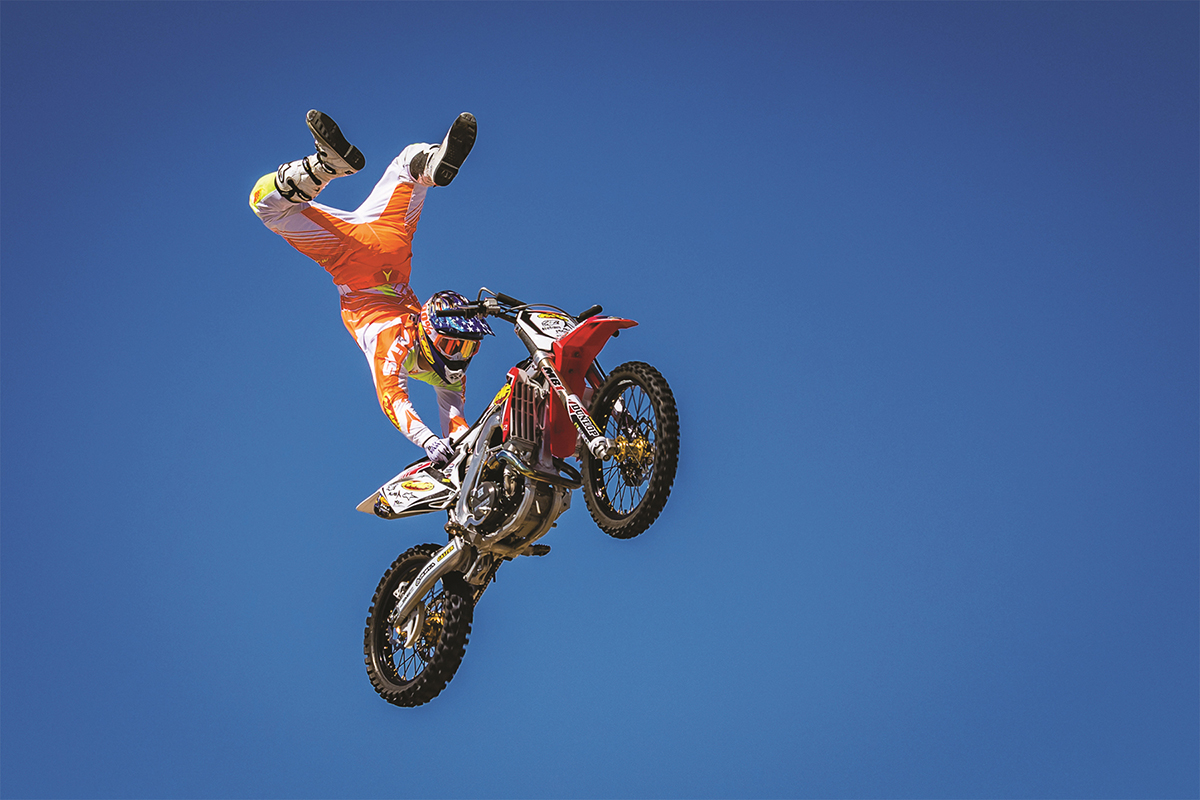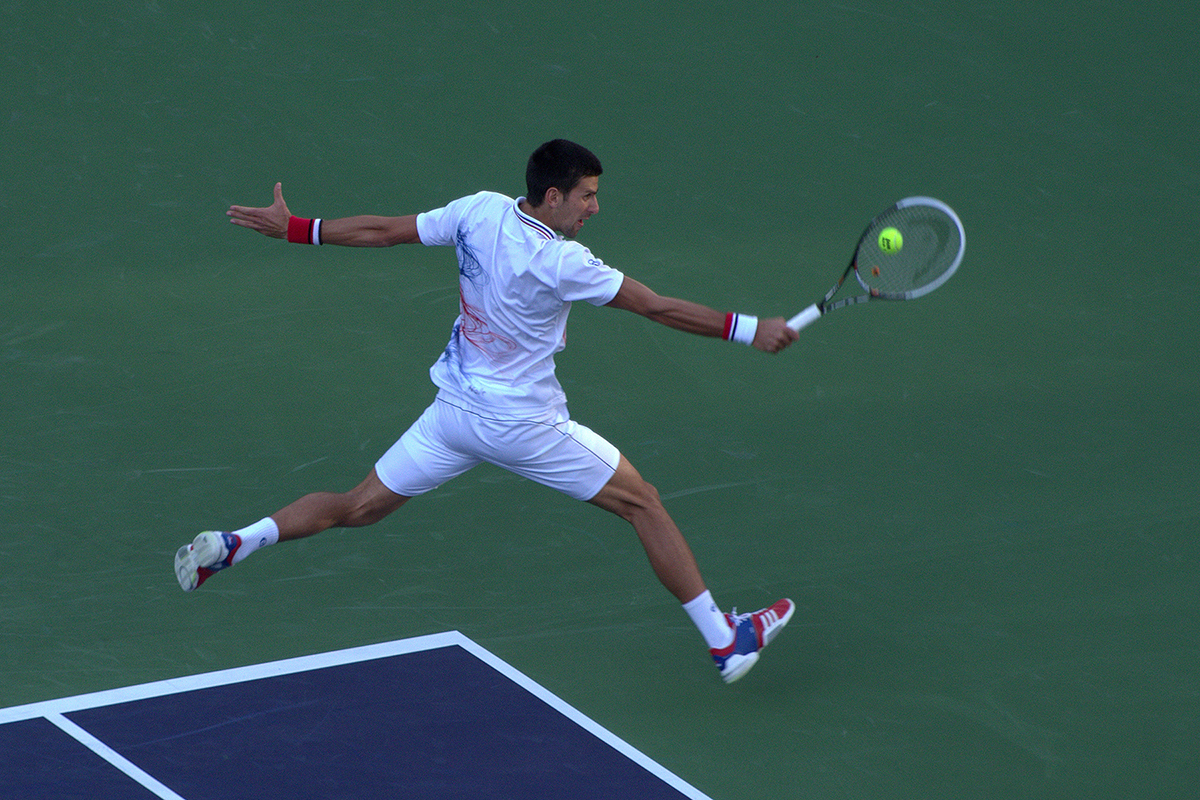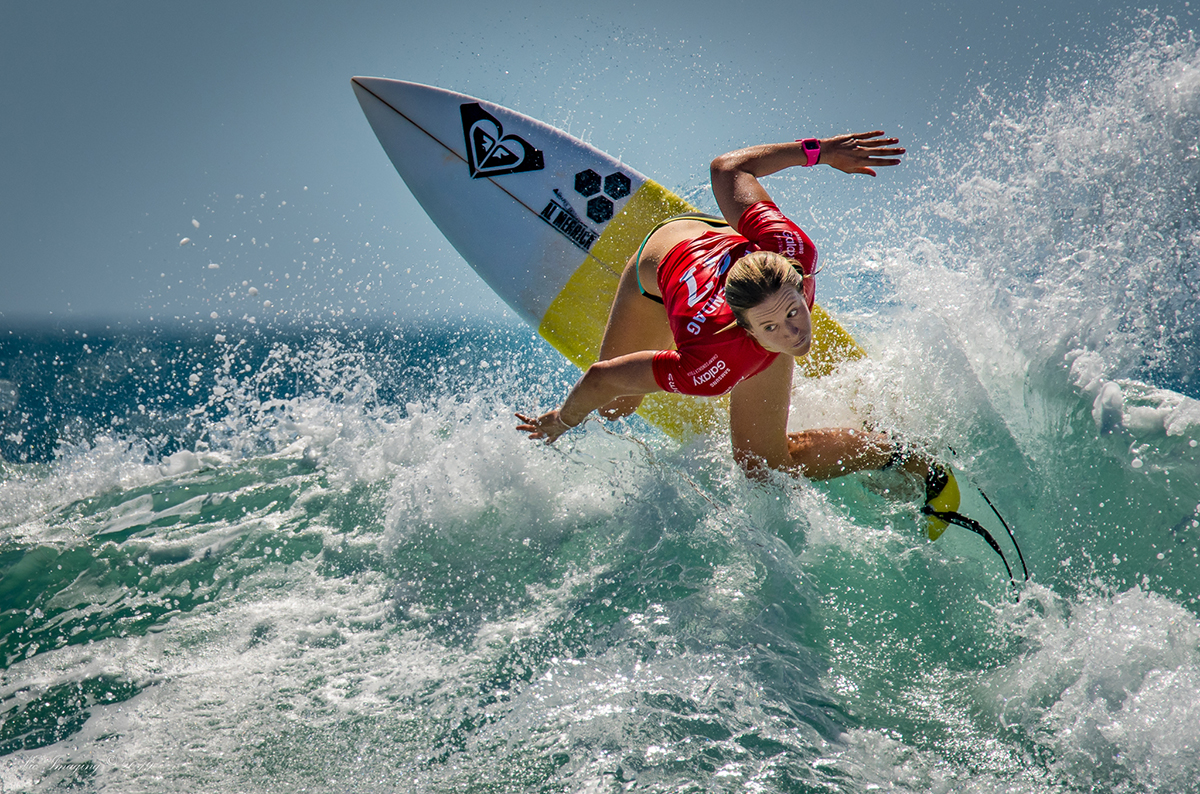La photographie de sport est certainement l'un des types de photographie les plus passionnants, et l'opportunité d'immortaliser une victoire palpitante ou une défaite dévastatrice est ce qui attire tant de photographes vers les événements sportifs. Mais il est souvent très difficile d'obtenir des photos claires et nettes de l'action, car les sujets sont presque toujours en mouvement et il est souvent difficile de prévoir ce qui va se passer et où se trouve la bonne photo. Si vous souhaitez prendre de meilleures photos sur le terrain, sur le court, sur la pelouse ou dans le stade, consultez les conseils ci-dessous pour la photographie sportive !
Images et conseils par Vic Buhay
Ce que vous apprendrez dans cet article :
- Comment choisir la bonne vitesse d'obturation pour figer une action rapide.
- Pourquoi les réglages de l'autofocus sont importants et comment les ajuster pour différents sports.
- Techniques pour isoler les athlètes et capturer l'émotion en utilisant le cadrage et la profondeur.
- Le rôle de la compensation de l'exposition dans des conditions d'éclairage difficiles.
- Des méthodes pratiques pour obtenir des photos plus nettes et plus convaincantes lors de n'importe quel événement sportif.
CONSEIL 1 : Utilisez une vitesse d'obturation rapide

Pour capturer des images claires et nettes de l'action en cours, vous devrez utiliser une vitesse d'obturation rapide afin d'éviter les flous. Nous vous recommandons de jouer avec ces paramètres dès le début et de les synchroniser avec les mouvements de l'athlète avant le début du match.
CONSEIL 2 : Se concentrer sur les athlètes

Lors d'un événement sportif, tout le monde est là pour regarder les athlètes performer et les encourager, c'est pourquoi les athlètes doivent être au centre de toutes vos prises de vue. Essayez de souligner l'intensité et l'émotion de ces moments en isolant vos sujets des supporters, des lumières et des parties du stade qui peuvent être visibles. téléobjectif réglage de l'objectif.
CONSEIL 3 : Ajustez votre approche de la mise au point automatique si nécessaire
En particulier lorsque vous photographiez de nouveaux événements sportifs auxquels vous n'avez jamais assisté, vous devrez peut-être ajuster votre autofocus pour obtenir des images plus nettes. Cela est vrai même si vous utilisez principalement l'autofocus à point focal unique.
CONSEIL 4 : Tirez parti de la compensation de l'exposition

La compensation de l'exposition est souvent négligée, non seulement dans la photographie sportive, mais aussi dans de nombreuses autres formes de photographie. Si vous n'avez jamais entendu parler de cette fonction ou si vous ne savez pas à quoi elle sert, sachez qu'elle permet d'ajouter ou de retrancher jusqu'à trois diaphragmes de lumière. Elle est donc très utile lors de la prise de vue d'un événement sportif en extérieur et dans d'autres situations où vous souhaitez compenser certaines conditions d'éclairage. Tournez la molette d'exposition vers (+) pour éclaircir l'image et vers (-) pour l'assombrir.
CONSEIL 5 : Choisissez l'objectif adapté au sport et à l'environnement
Lorsqu'il s'agit de photographie sportive, l'utilisation d'un objectif doté d'un autofocus rapide, d'un zoom puissant et d'une excellente stabilisation de l'image est cruciale, en particulier lorsque vous suivez des mouvements imprévisibles ou que vous photographiez à main levée. Heureusement, Tamron propose plusieurs options exceptionnelles pour les sports d'intérieur et d'extérieur qui offrent des résultats remarquables.
Voici quatre des meilleurs objectifs Tamron pour la photographie de sport et les raisons pour lesquelles ils se distinguent :
- Tamron 50-400mm F/4.5-6.3 Di III VC VXD
Cet objectif zoom ultra-polyvalent est idéal pour couvrir un large éventail d'actions, qu'il s'agisse de jeux en milieu de terrain ou de prises de vue à distance dans un stade. Son format compact le rend très mobile, tandis que le moteur linéaire VXD garantit un autofocus rapide et précis et que le système VC (Vibration Compensation) permet d'obtenir des résultats nets à main levée, même à des distances focales plus longues. - Tamron 150-500mm F/5-6.7 Di III VC VXD
Parfait pour les sports d'extérieur tels que le football, le baseball ou les sports mécaniques, ce super téléobjectif offre une portée étendue pour capturer des gros plans depuis l'autre côté du terrain. Malgré sa portée, il est étonnamment facile à tenir en main grâce à la technologie VC et aux performances rapides et précises de l'AF. - Tamron 70-180mm F/2.8 Di III VC VXD G2
Un choix idéal pour les sports d'intérieur comme le basket-ball, le volley-ball ou la gymnastique. Son ouverture lumineuse de f/2,8 permet des vitesses d'obturation plus rapides dans des conditions de faible éclairage, et sa conception compacte le rend facile à manœuvrer. Les technologies VC et VXD garantissent qu'il est prêt à figer l'action avec clarté. - Tamron 50-300mm F/4.5-6.3 Di III VC VXD
Équilibrant la portée et la portabilité, cet objectif est idéal pour les sports d'intérieur et d'extérieur. Il vous offre une portée de téléobjectif supplémentaire dans un format compact qui le rend polyvalent pour la couverture d'événements. La fonction VC assure la stabilité des prises de vue à main levée et l'AF VXD suit les sujets en mouvement sans effort.
Quel que soit l'objectif Tamron que vous choisirez, vous bénéficierez d'un autofocus rapide et réactif, d'une stabilisation d'image puissante et de plages de zoom flexibles adaptées aux moments d'action. Ces objectifs sont conçus pour vous aider à capturer l'intensité du sport, sans perdre le fil.
Dernières réflexions sur les conseils pour la photographie de sport
En appliquant ces conseils de pro pour la photographie sportive, vous serez mieux préparé à capturer des actions dynamiques, des émotions brutes et des moments inoubliables sur le terrain, le court ou la piste d'athlétisme. Qu'il s'agisse de régler la vitesse d'obturation, d'affiner l'autofocus ou d'expérimenter la compensation de l'exposition, chaque paramètre joue un rôle crucial dans l'amélioration de vos prises de vue. En outre, le fait de se concentrer sur les athlètes et d'anticiper l'action peut transformer des photos ordinaires en images narratives puissantes. En fin de compte, avec de la pratique et les bonnes techniques, vos photos de sport deviendront plus nettes, plus intentionnelles et beaucoup plus percutantes.
